#st John’s wort
Text
8th June
St Columba’s Day

Colmcille (St Columba) on High. Source: BBC Alba and The Northern Scot website
Today is St Columba’s Day. Despite his saintly title “The Dove of Peace” (Colmcille in Gaelic), Columba had a somewhat violent temperament. A dispute over the authorship of a Psalter with a fellow cleric in his native Ireland led to an actual battle between their respective bands of followers, until the Irish Church intervened and sent Columba off to Scotland to convert the still pagan Picts to Christianity. But bad temper and violence accompanied even his missionary work. Slipping on a flounder one day, Columba is said to have cursed the unfortunate fish, leading to its lopsided appearance. He also dealt with a lecherous Pictish noble by “smiting him with an Angel”. Whereas his victim was suitably stunned, the fate of the angel projectile is not known.
Columba’s most famous exploit was rescuing his followers from the Loch Ness Monster, who in an early fifth century appearance, reared threateningly above two of the saint’s disciplines who were attempting to cross the loch in a small boat. Columba ordered the creature not to harm the men and it slipped away under the surface of the lake and has not harmed anyone since. Columba was a highly successful missionary and based himself on the island of Iona where he developed an almost cult like status.
Apparently Columba wore the flower of St John’s Wort to ward off evil. Apparently it still works.
17 notes
·
View notes
Text
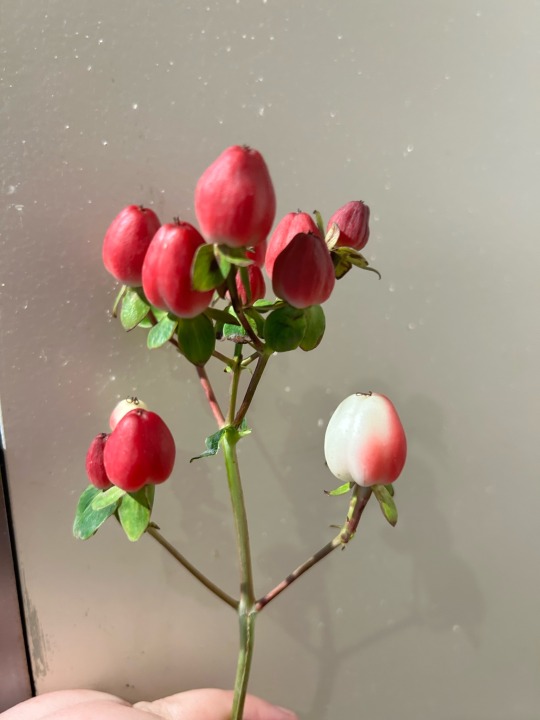
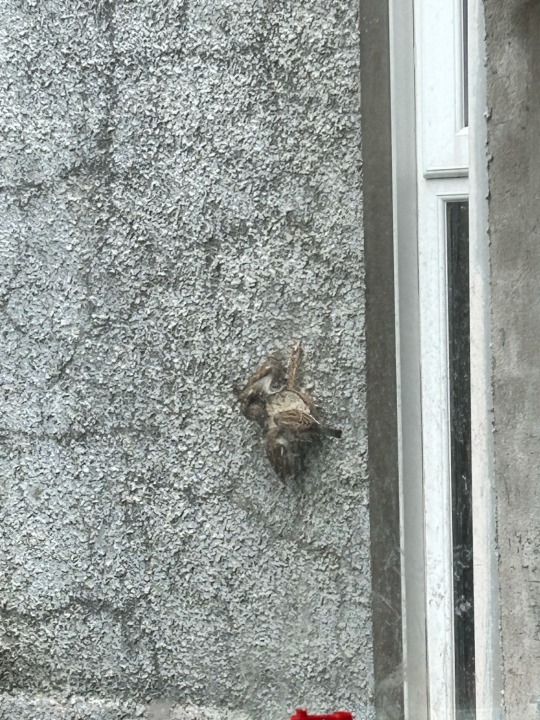


My day so far.
0 notes
Text

Flowers for the Doctor
The Clones all deserve flowers! Or maybe they think you deserve flowers 😉 Either way, love is in bloom this week for the Clone Flowers Fic Event!
Throughout this week, May 20th-25th, certain participants will be posting their own fics of Clones and different flower themes that were selected! The participants as well as the Clones and flowers they will be writing for are listed below and links to each fic will be added as they are posted! 💐 Follow the tag #cloneflowerficevent to see them all as they come!!
Event Masterlist
@arctrooper69 - Tup, Rex, Gregor
@photogirl894 - Hunter, Wrecker, Fives
@nahoney22 - Fox, Tech
@totallyunidentified - 99, Cody
@dragonrider9905 - Hardcase
@l-lend - Wolffe
@moonstrider9904 - Howzer
@eyecandyeoz - Waxer
Make sure to go check out their entries too, we'll be posting throughout the week!
Pairing: Kix x f!reader
Chosen Flower: St. John's Wort
Word count: 3.8k
Rating: PG-13
Warnings/Notes: Medical terminology, pandemic, sickness and death, brief suggestive content, friends to lovers
Beta-read by @anxiouspineapple99

The helmet of your hazmat suit hisses as you release the seal. A deep sigh passes your lips as you step out of your suit and hang it on the rack for decontamination. When you open the door to the decontam stalls, the creak echoes around the tiled room.
'Damn. All this and we can’t even get some WD-40 on the hinges?' You think to yourself before stripping down to your skivvies and stepping under one of the spouts. The doors from the infectious disease ward open again and a friendly face steps in.
“Kix.”
He smiles at you as he strips down to his briefs and steps under a spout. “Long day, Doc?”
You can’t even muster a reply as you close your eyes and hit the red button in front of you. For just a single moment, the rest of the hospital fades away with the roar of the sonic waves washing over you, and then it’s over.
“That good, huh?” Kix notes your response, or lack thereof.
You shake your head, trying to keep it together. “I’ve had better.”
Kix holds the door to the locker room open for you as you step through. “At least you don’t have to wear the clone kit all day.” He says, tossing you a pair of clean blacks from the cabinet. “On the battlefield it’s great, but here I bump around like a pinball. I’m lucky if I can make it through the day without breaking anything.” He jokes, trying to lighten the mood.
The corner of your mouth does twitch a little. “I don’t know.” You respond, “I’ve always thought I looked like a hutt in those hazmat suits, and the gloves are so annoying.”
“Dinner?” Kix simply asks.
“Please.”
He leads the way to the hospital cantina. You met Kix just a couple weeks ago, but the two of you had become fast friends. He was a clone medic, sent to your planet to help in one of the hundreds of makeshift ‘hospitals’ that had popped up in the wake of a pandemic. This particular hospital was housed in an academic campus, shut down because of the spreading illness.
Normally, you were the second in command in the biggest hospital in the planet’s capital, but for the past month your days consisted of random converted buildings, biohazard suits, and patients you felt like you couldn’t do anything for. At the end of the day, you were thankful Kix had been stationed at your hospital.
Though you two were usually preoccupied with your own patients throughout the day, the pair of you could usually be found together on your breaks. It felt like Kix truly saw you and your struggle. Sure, the hospital Medical Director was the top dog, calling the shots, but you were the one in the trenches of the Infectious Disease Ward every day.
This pandemic was an enigma that you just couldn’t figure out. It should have just been the normal yearly wave of Wet Lung, easily managed by some general antibios, but those didn’t work. Then your Medical Director ordered you to move up to more aggressive drugs, so you did. Before you knew it, your patients were on IV drips of the most aggressive antibio cocktail you could think of.
And they still weren’t getting better, in fact, they were getting worse. You’d already lost a number of patients to sepsis, blood poisoning, and the other hospitals across the planet were facing the same issues. As far as you knew, any person that had caught this mysterious strain of Wet Lung were either dead or dying and there was nothing you could do about it.
You nearly bump into Kix when he stops to open the cantina door.
“Coruscant to Doc, are you okay?” He asks, guiding you through the door with a hand on your lower back.
You shake your head, trying to clear it. “Yeah, Kix. Just a long shift, you know?”
He squeezes your shoulder before grabbing a tray and heading to the serving line. Even though the Republic had brought the war to your Planet a few months ago, you had to admit their support was needed for this pandemic. And nobody knows how to feed the masses quite like the GAR.
Kix immediately starts eating when you two sit down, he told you about one of his brothers, Fives: 'If you didn’t eat quickly around him, he’d swipe the rest of your rations.'
You just can’t bring yourself to eat, instead you just chase a few peas around your tray. Of course, Kix notices.
“Jahaal'got.” He says, using your nickname to grab your attention. “Come on. Talk. It wasn’t just a long day.”
You avoid his eyes, the words getting stuck in your throat. You’ve lost patients before, multiple in one day even, so why was today crushing you so badly?
Kix sets down his fork and reaches across the table to gently grasp your chin between his thumb and forefinger, forcing you to look at him. “How many did you lose today?”
You take a deep breath, “Twelve, eight more deteriorating. I just… I don’t get it, Kix. What are we missing? The drugs aren’t working, they keep going septic before we can catch it, and those that haven’t progressed to sepsis are dying to the Wet Lung.”
Kix stops your rambling by taking both your hands in his. “You remember what your nickname means, right?”
You should be able to remember, but your mind has been so overworked, it doesn’t come to you. “I, uh… something about medicine?”
“Jahaal’got.” Kix repeats it. “It’s the mando term meaning 'good for health', because that’s what you are. You’re doing everything you can, and that’s all you can do.”
You nod, closing your eyes and rolling your head to try to release the tension in your shoulders.
“You’re off tonight, right?” Kix asks.
“No,” you shake your head. “I picked up the night shift, I have to be here.”
Kix scoffs at you. “Are you serious? What, you’re just going to sleep on the hospital floor forever?”
“Not forever.” You protest. “Just until this blows over.”
“This pandemic or the war?”
You meet his eyes, and a knowing look passes between you. After meeting him, you had discussed sending in an application to become a civilian medic for the GAR.
“Well, we have an hour before the night shift starts.” Kix says, standing up and taking your tray. “Why don’t we go for a walk and then try again at this ‘food’ thing before going back to work?”
Your brow furrows at his remark, “But you-”
“Will also be working the night shift, so it seems.” He cuts you off. He shifts both trays into one hand and holds his other out to help you out of your seat.
Kix leads the way, dropping the trays in the wash basin on the way out of the cantina. Outside, the sun is beginning to set, painting the sky with shades of orange, pinks and purples.
The two of you walk through the academic campus, chatting about nothing in particular. Kix asks you a few questions here and there about the buildings you all pass. Though it’s been a few years, you tell him what you remember about studying here.
“It’s a shame all the students had to be sent home.” You remark as you step into the university greenhouses.
Kix nods his agreement. “What is this place?” He asks, looking around.
“The campus greenhouses, they're shared by a few departments.” You explain. “Biology, horticulture, environmental studies, and engineering to name a few.”
“I’m surprised everything is still alive, don’t plants take some maintenance?”
“Well, the greenhouse forms a pretty self-sustaining environment. I remember the medical students coming in here a couple times.”
Kix tilts his head at you. “What would medical students study in here?”
“Well,” you shrug, “There are quite a few medicinal plants native to this planet. Though they aren’t quite as effective as modern medicine, they can still be used for daily management or as an additional treatment.”
The two of you weave through the greenhouse aisles for a few more minutes before you notice Kix has lagged behind. When you turn around to find him, you notice he’s hiding something behind his back.
Your eyes narrow. “What do you have there, Kix? It’s not a bug, is it? That was only funny the first time.”
He chuckles, “Haha, no. I promise it’s not. Here, one last thing to brighten your day.”
You freeze when you notice what he has in his hand.
Kix notices your expression at the small yellow flowers he’s holding out to you. “What, are they poisonous or something?” He asks hesitantly.
“No,” you shake your head smiling as you take them from him. “It’s just funny, those are St. John’s Worts.”
“Weird name.”
“It’s from local mythology.” You explain. “The flowers tend to bloom on the summer solstice, which is dedicated to their namesake.”
Kix looks from you to the flowers and gently picks a few more sprigs from the nearby planter, tucking them behind your ear. “They’re pretty, like something else I’m looking at.”
His words make you smile, but you playfully swat at his arm. “Oh stop it. I know I look like hell.”
“You look better than anyone else would after nearly a month of non-stop work in an infectious disease ward.” He responds.
“Thanks Kix.” You say, hoping that your sincerity projects. Before you know it, you’re throwing your arms around his neck.
Kix falters, but only for a second. You feel his arms wrap around you, strong and steady, just like him. Just like he has been for you the past few weeks. Maybe it was his clone conditioning, or maybe it was just him, but he seemed so unshakeable and he always knew what to say.
He doesn’t relax until you do, but his hands remain on your hips, his eyes darting across your face, trying to read your thoughts. One of your hands rests on his chest, the other still on his shoulder. You won’t deny how drawn you are to him. Though you hoped for the end of this mystery illness plaguing your planet, it stung that it’s end meant saying goodbye to Kix.
Kix is shifting. ‘He’s leaning in, why is he leaning in?’
You move as well, but the moment is shattered when your foreheads bump into each other.
Kix lets go of you completely and takes a step back, color spreading across his cheeks.
“I uhhh…” He tries to find the words, rubbing the back of his neck.
“Uh, it’s fine.” You stammer. “You’re fi- we’re fine.” A giggle slips past your lips at the awkwardness.
Kix breaks into some nervous laughter as well before readjusting some of the yellow flowers in your hair. “Tell me about them.”
You smile at him. “Well, they’re perennials, meaning they come back every year, they don’t need to be replanted. Although the flowers are yellow, they’ll stain your fingers red when you crush them. They’ve been shown to have some antidepressant properties as well as anti-inflammatory benefits, but you need to be careful when combining them with modern drugs.”
You notice Kix’s soft expression as he listens to you.
“It’s been shown that St. John’s Wort has antibio and antiviral properties as we-'' Your heart stops. “Kix.”
“What?”
“Kix, that’s it,” you repeat. “That’s why we keep losing them. We’ve been treating this Wet Lung with antibios, but those aren’t working because it’s not bacterial.”
Kix’s mouth drops open and he says the words at the same time as you. “It’s viral.”
You can see the thoughts tumbling in his head. “And because we advanced to use the system-wide drugs, the patient’s are too weak to fight the virus, triggering the sepsis.” He stammers out. “But, wait, that can’t be right. How can it be viral? There’s never been a case of viral Wet lung reported on this planet.”
Your feet move automatically as you start pacing. “‘There’s always a patient zero. Normal trade is scanned and sanitized.” You stop. “The troopers.”
Kix’s brow furrows. “No, we're vaccinated.”
“Yes, but vaccines aren’t a foolproof plan, with a mutated strain it might present as a mild cold, or not even show symptoms, especially since you all are engineered to have a more robust immune system.” You say, your brain moving a klick a minute. “Where were you all stationed before being deployed here?”
“Most of the 501st was on shore leave on Coruscant.” Kix replies, shaking his head. “The Carnivore and Execute Battalions… They were on Rhodia and transferred directly here for the occupation.”
His eyes widen and he grabs your wrist without another word.
“Kix? Kix!” You shout as he drags you through the campus back towards the hospital. “Why is it so important that you were on Rhodia?”
“Rhodia is one of the native planets for viral strains of Wet Lung.” He pants. “The Rhodians are largely immune, but some mutated strains survive. You were right, we had a couple troopers reporting colds when they transferred.”
The doors to the Infectious Disease Ward bang open and Kix finally lets go of your wrist, giving you a moment to breathe.
“Like you said, the troopers, we’re engineered to have stronger immune systems and we’re vaccinated.” He continues. “The population here…”
“We never have.” You finish his sentence. “We don’t have any kind of immunity. Combined with your theory that it’s a mutated strain and the antibios we’ve given them, it’s no wonder-”
“WHAT IS THE MEANING OF THIS?”
The two of you turn and see the Medical Director storming down the nearby hallway.
Kix steps partially in front of you and stands at attention. “I’m sorry sir, but we-”
“I don’t care what you two were doing!” The Director booms. “You bursting in here is no excuse.”
You slowly step out from behind Kix. “Please, sir. We think we’ve figured out this pandemic.”
“I don’t know who you think you are, but I’m in charge here.” The Director says, his eyes narrowing.
Instead of bowing away as usual, you stand your ground. “I am just as qualified as you, if not more. I'm the one that's been running this ward while you sit in your office. I graduated from this very campus, top of my class and I’m the second in command at the Capital Hospital. This disease we’re dealing with, it has to be viral.”
Your Medical Director looks you up and down, pausing at the yellow flowers in your hair. “There has never been a case of viral Wet Lung reported on this planet. The antibios always work. We just need to find the right combination of meds.”
“Sir, you need to listen.” You insist. “I know we’ve always treated Wet Lung with antibios, but look,” You wave your arm at the ward behind him. “Every single patient that’s come in is either still sick or has progressed to sepsis. The other hospitals are reporting the same.”
Kix puts a comforting hand on your shoulder. “She’s right, sir. Strains of viral Wet Lung are common in other systems. We had a couple battalions transfer here from one of those systems, Rhodia. It’s likely some of our troopers were carriers for a mutated variant and brought it here.”
You pick up where Kix left off. “Even though our population doesn’t have any innate immunity, a fair amount of people probably could have ridden out the virus if we hadn’t given them those antibios.” You bite your lip before continuing. “Those drugs are effective, but in a patient with no bacterial infection, all it would do is compromise their system. They can’t fight the virus, and they progress to sepsis. Only we’re not catching it before it kills them because the Wet Lung is masking the sepsis symptoms.”
You try to stop the words from spilling over your lips but in a last desperate plea for your officer to understand, it slips out.
"We’re killing them."
Kix’s hand squeezes firmly on your shoulder as you let out a choked sob. Your medical officer looks at you curiously, you’ve always been so level headed and sure footed.
The Director crosses his arms. "So you’re telling me to take them off the drugs and do nothing. You do know that’s how we treat viruses, right?"
You lock eyes with him. “That’s exactly what I’m saying. We need to give them supportive treatment; fluids, steroids, pain medication. We can try some antivirals to weaken the Wet Lung strain, but the patients will have to fight it off on their own. All we can do is give them the best chance possible.”
Your director looks you up and down before letting out a little ‘hm.’ He glances behind him to the infectious disease ward and back to you. “I will not take responsibility when this goes wrong. Looks like we’re taking your direction now, Doctor.”

Under your instruction, all of the patients in the ward are removed off the antibio cocktail. Much to your Medical Director's annoyance, the death rate begins to improve. You sent word to the other hospitals caring for pandemic patients and they saw similar results. It’s a slow process, and Kix stays by your side every step of the way. The day you discharged your first survivor, you cried. You both did, actually.
It takes a few more weeks, some patients are touch and go. There were still a few deaths, and Kix held you as you cried for them. Then came the day that you got the news. Your patient numbers had reduced so much your little makeshift hospital was going to be closed, and you were being sent back to the Capital Hospital with a new position, no less. Your remaining patients would be transferred along with you and the University was going to be reopened.
And yet, you weren’t quite happy. Sure you’d basically saved your planet’s population from facing extinction, but you couldn’t revel in it knowing that a certain someone was going to be shipped out.
“The campaign here is over.” Kix had explained. “And with the pandemic contained, there’s no reason for the medics to stay behind.”
The 501st was being sent to Ryloth. You knew there was a crisis brewing there, and you were proud that you knew some of the brave men going to help there, but it still stung. It stung the same as your eyes did as you stand on the landing platform, waiting for someone to come say goodbye.
“There you are.” He says, walking up behind you.
You sniff slightly, trying to keep tears from pricking at your eyes. “Here I am.”
You hear a bit of laughter and you notice a group of clone troopers in blue armor across the landing platform that seem very interested in the two of you.
“Don’t pay attention to them.” Kix says, moving in front of you to block them from view. “Brothers…” He mumbles.
“I get it.” You say, searching his face, what for you’re not quite sure.
Kix reaches for a pouch on his belt. “I- I have something for you.” He says, sheepishly pressing a box into your hands.
Looking down you realize it’s a jewelry box. Gently you open the lid and gasp at the sight of what lays inside. Strung on a delicate chain is a single golden pendant of a flower. The same flower that Kix had tucked into your hair all those weeks ago. The same flower that led to the salvation of your planet.
“Kix… I don’t know what to say.” You stammer.
“Don’t say anything,” he says sweetly. “Just turn around for me.”
He takes the necklace from the box and gently brushes your hair out of the way before clasping the chain around your neck. Turning back around you can only shake your head and smile at him.
“I have something for you too.” You say.
Kix looks at you a little puzzled, he hadn’t seen you holding anything.
“They’re naming the new wing of the hospital after you.” You explain. “It’ll be like you’re always here. No one will forget what you did for us, for me.”
Kix gingerly cups your cheek with one hand. “It was an honor and a privilege.”
He’s leaning in again.
This time your lips connect and the landing platform melts away. There’s nothing but him. Him and you.
Of course your heart has to ruin it as it sinks with the returning thought that he’s literally about to leave and never come back. You break the kiss, but he keeps your foreheads pressed together.
“What is it?” He breathes.
You can’t help but scoff. “You’re leaving and we’re kissing. I doubt the GAR will give you much time for visits.”
“Hey,” Kix says gently holding your chin between his thumb and forefinger. “It’s like you said, I’ll always be here, jahaal'got. I will admit I should’ve kissed you sooner.”
“Hey lovebird! It’s time to go!” One of his brothers shouts.
That manages to get a laugh out of the two of you.
“I think you have to go.” You mutter.
Kix lets you go and takes a step back. “There’s one more thing, but it’s waiting in your office.”
He turns to leave, but you reach out and grab his bracer. “Kix. Thank you. For everything.”
With a smile, he leans in to peck you on the cheek before turning and jogging over to the shuttle where his brothers are waiting.
A grin spreads across your face when you see one with shoulder pauldrons wrap his arm around Kix’s neck to give him a noogie, while another with a top knot of hair claps him on the back.
The sun is setting by the time you get back to your office. The door slides open with a gentle woosh. It’s a nice space, though somewhat empty as you have yet to move most of your stuff over from your old office. On your desk is a vase of small yellow flowers. You find yourself shaking your head again as you walk closer.
Kix… when will he stop absolutely melting your heart?
When you didn't think he could surprise you any more, you realize the flowers in the vase are ceramic. Tucked in between some of the delicate blooms is a notecard. You instantly recognize Kix’s swooping handwriting.
‘I think I need to make an appointment with the Doc, I seem to have been bitten by the love bug. (augh, that was awful, Jesse told me it would be good) I hope you like these, you deserve real ones, but had a local artist make them for you since I won’t be around to make sure real ones never wilt. I’ll see you soon, jahaal'got, on my next shore leave.’

Also Happy Birthday @arctrooper69! (today, May 20th)
#cloneflowerficevent#clone trooper kix#clone medic kix#star wars tcw#tcw#the clone wars#star wars the clone wars#clone wars#sw tcw#tcw kix#kix#501st#501st legion#kix x reader#st. john's wort
133 notes
·
View notes
Text

"Hypericaceae Field" - Otogirisou
38 notes
·
View notes
Text


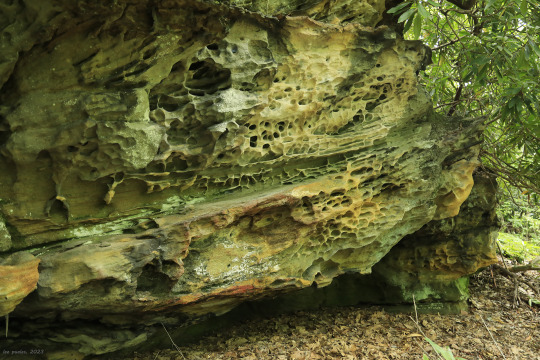

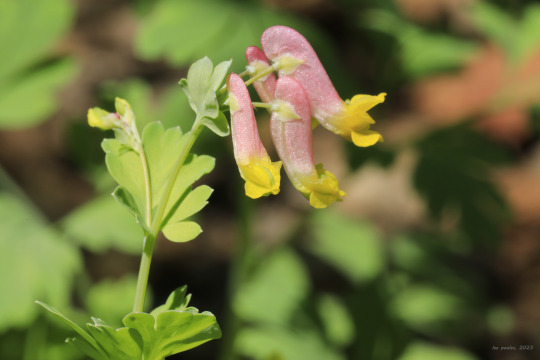
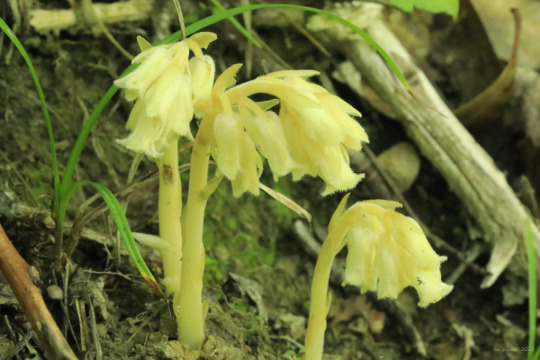










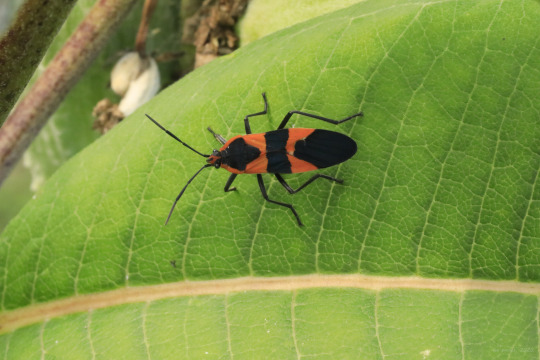
A hike in the Cheat River Canyon on a hazy, mid-summer day brings a great many rewards, both large and small.
From top: Fractured and pitted sandstone gives testimony to the canyon's ancient struggle with the elements; black cohosh (Actaea racemosa or Cimicifuga racemosa), whose towering flower spikes stalk the old woods like magical beings; the colorful rock harlequin (Corydalis sempervirens), an endangered fumitory that haunts the canyon's rocky outcrops; pinesap (Monotropa hypopitys), a parasitic plant closely related to Indian pipe; spotted St. John's wort (Hypericum punctatum), which is distinguished from the invasive St John's wort (Hypericum perforatum) by the numerous black dots on its flowers and leaves; downy rattlesnake plantain (Goodyera pubescens), a shade-tolerant terrestrial orchid that favors oak-hickory woods; shrubby St. John's wort (Hypericum prolificum), a mounding, deciduous shrub of open, sandy woods; orange-fringed orchid (Platanthera ciliaris), a stunning late summer beauty of Appalachia's moist meadows and open woods; a hummingbird clearwing moth (Hemaris thysbe) visiting a late-blooming milkweed; a silvery checkerspot (Chlosyne nycteis) drinking up the nectar of a butterfly milkweed (Asclepias tuberosa); an American green crab spider (Misumessus oblongus) stalking a black-eyed Susan for its next meal; a large milkweed bug (Oncopeltus fasciatus) being perfectly beautiful on a lazy summer day; and last but not least, a hulking patch of eastern Jack-0'-lanterns (Omphalotus illudens), which contrary to what field guides say have never glowed in the dark for me (I love the toxic little beauties nonetheless).

#appalachia#vandalia#west virginia#wildflowers#flora#summer#snake hill wildlife management area#cheat river canyon#chestnut ridge#fungi#insects#orchids#black cohosh#rock harlequin#pinesap#spotted st. john's wort#downy rattlesnake plantain#shrubby st. john's wort#orange-fringed orchid#hummingbird clearwing moth#silvery checkerspot#butterfly milkweed#american green crab spider#large milkweed bug#jack o' lantern#lepidoptera
173 notes
·
View notes
Text
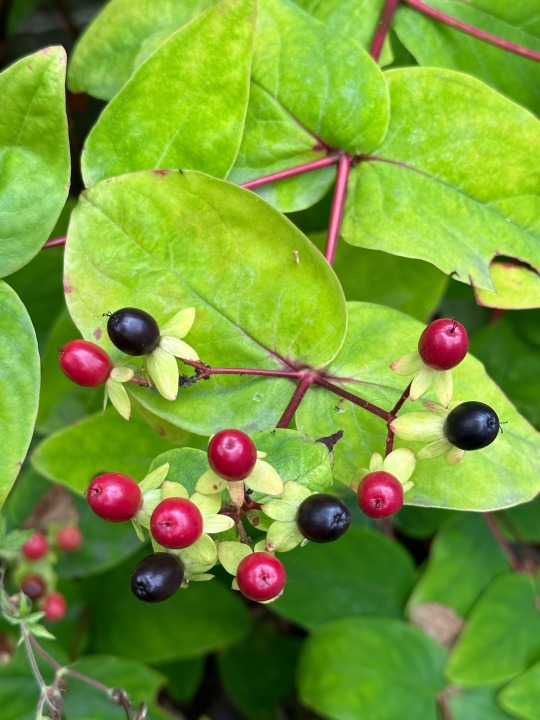
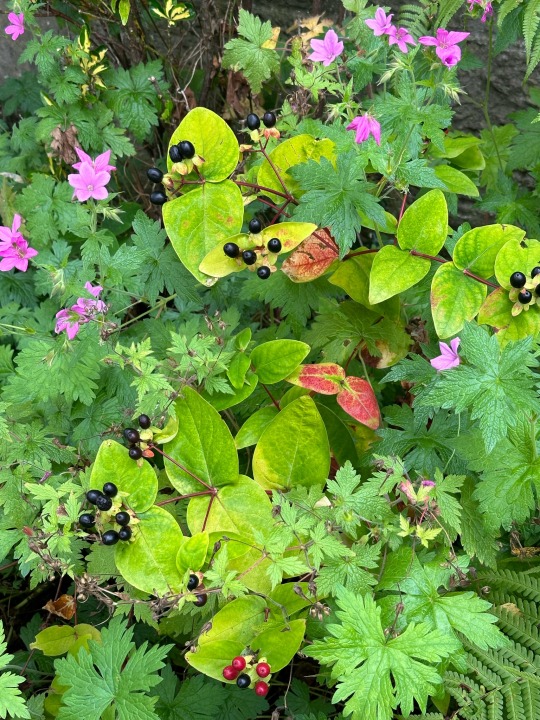
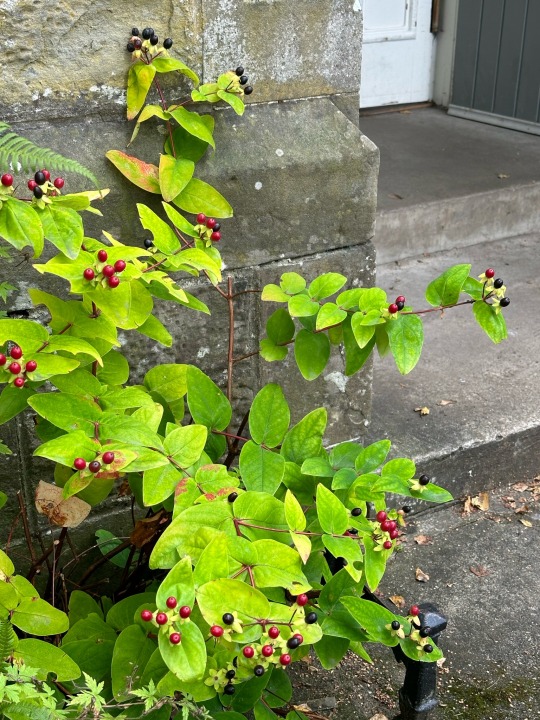
Plant of the Day
Thursday 14 September 2023
Today I noticed these decorative berries in a border probably on Hypericum ‘Hidcote’ (St John's wort), certainly a sign of autumn. This shrub can be pruned to a woody base so it behaves like an herbaceous perennial.
Jill Raggett
117 notes
·
View notes
Text
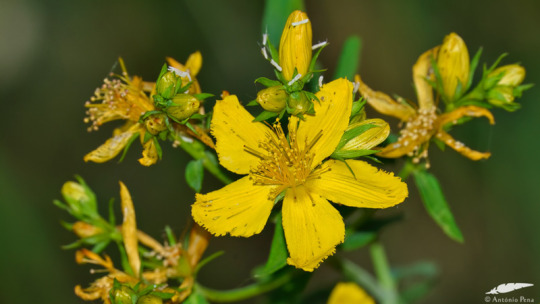
St John's Wort - Erva-de-são-joão (Hypericum perforatum)
Alcácer do Sal/Portugal (25/05/2024)
[Nikon D7100; Tamron 100/400mm Di VC USD F4,5-6,3; 1/320s; F13; 400 ISO]
35 notes
·
View notes
Text
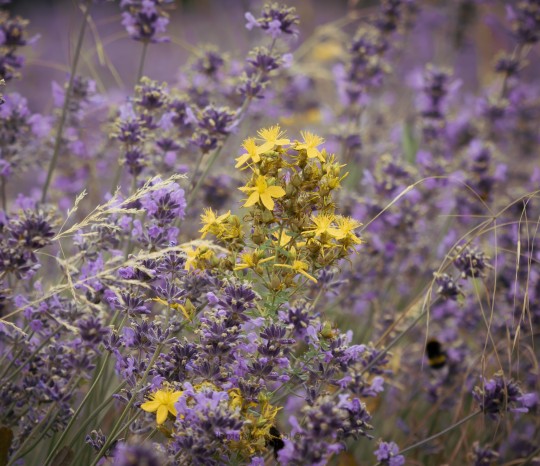
82 notes
·
View notes
Text
𓋼𓍊𓋼𓍊Wild Plant Lore P.2 𓍊𓋼𓍊𓋼
Some more notes from my herbology journal of wild plants and weeds that you can utilize in your practice. Includes mundane uses like culinary, medicinal properties, folklore/cultural importance, and magical associations. This post does contain poisonous/toxic plants that can be fatal if ingested, I'm not suggesting anyone inexperienced or experienced do anything with them, do your own research on how to handle them if you plan on using them in any way. They're interesting to learn about nevertheless.
Disclaimer at the end !!
𓍊𓋼𓍊𓋼𓍊𓋼𓍊𓋼𓍊𓋼𓍊𓋼𓍊𓋼𓍊𓋼𓍊𓋼𓍊𓋼𓍊𓋼𓍊𓋼𓍊𓋼𓍊𓋼𓍊𓋼𓍊𓋼𓍊𓋼𓍊𓋼𓍊𓋼𓍊𓋼
Yarrow- Also known as common yarrow, bloodwort, herba militaris, or Achillea Millefolium. Yarrow is a woody plant with small, round, white flowers and frilly, feather-like leaves surrounding the stems. This plant looks very similar to hemlock which is very poisonous but you can tell the difference by yarrow’s distinctive leaves. Yarrow is edible and can be eaten raw, it tastes pretty bitty and earthy so it’s best to pick while young. It’s most commonly used in salads and soups. Yarrow has a rich medicinal and magical history. It used to be called herba militaris, the military herb, because of its astringent properties. Its Latin name, Achillea Millefolium, comes from the Iliad where Achilles and his soldiers use yarrow during battle. Poultices and ointments made from its leaves are used to aid in lessening swelling and bleeding. Do not consume yarrow if you are on blood thinners or pregnant/lactating, this plant has a chance of causing miscarriages. People are commonly allergic to this plant so please be wary of this and test it before consuming, skin allergic reactions are the most common. Yarrow is also commonly used to treat stomach ailments like constipation, nausea, diarrhea, and IBS symptoms. The plant contains flavonoids that increase saliva and stomach acid to help improve digestion. It's also been used for menstrual pains and stomach aches as it can help relax the uterus and intestinal muscles. Some Native American nations have used yarrow for toothaches, earaches, and eyewashes through poultices and liquid infusions. There's no end to the magic of yarrow, there are so many different charms, divinatory practices, and spells that use yarrow in cultures worldwide. Many cultures have used it to keep away curses and evil magic, they would place it on their doorsteps to ward off evil spirits and keep witches away, or in cribs to protect babies and mothers. “When going on a journey, pull ten stalks of yarrow, keep nine, and throw the tenth away (as a spirit’s tithe), put the nine under the right heel, and evil spirits will have no power over you”.
It’s often been used in divination and psychic senses. In Ireland, it’s thought to be able to give someone ‘the second sense’ and it’s used in a lot of divinatory prayers and charms, usually to do with finding love. It’s also sometimes said that standing on the plant would give one temporary fluency of speech. There is a ceremony of some Gaelic speakers where they had to recite an incantation (the one below this block of text) before harvesting the plant as it was held to high importance. In Chinese belief, it’s thought to bring good luck and the dried stalks are sometimes used in I Ching divination.
“I will pluck the yarrow fair
That more benign will be my face,
That more warm shall be my lips,
That more chaste shall be my speech,
Be my speech the beams of the sun,
Be my lips the sap of the strawberry.
May I be an isle in the sea,
May I be a hill on the shore,
May I be a star in the waning of the moon,
May I be a staff to the weak.
Wound can I every man,
Wound can no man me.”
It’s widely used in love divination, sometimes people would put it under their pillows at night and say the rhyme below before bed. Sometimes they would pick yarrow from a young man's grave and whoever the girl saw in her dream would be hers. In some beliefs, if the man was turned to her then they’d never marry.
“Yarrow, yarrow, yarrow,
I bid thee good morrow,
And tell me before tomorrow,
Who my true love shall be.”
Girls in Aberdeen would go out in fields on a May morning to pick yarrow while reciting the chant below with their eyes closed, then open their eyes and the first man she spied would be hers that year. There are a lot of little incantations and charms like this for yarrow you can find online if you’re curious !!
“Good morrow, good morrow,
To thee, braw yarrow,
And thrice good morrow to thee;
I pray thee tell me today or tomorrow
Who is my true love to be.”
Alternatively, in some European beliefs, it was thought to be associated with the devil, being called devil’s nettle or “bad man’s plaything” due to the belief that witches used it in divination and devil worship. Elspeth Reoch was accused of being a witch in 1616 because she was caught picking supposed yarrow. In Wales, it was considered extremely unlucky to bring into the home and even supposedly called the “death flower” in some places.
⛧ Divination, love, protection from curses, witchcraft, and spirits. But also bad luck, curses, and death in some cultures
Datura- Also called devil’s trumpets, jimsonweed, and devil’s snare. Datura is a genus of 9 species, all of which are poisonous. Datura is a large, branchy herb that forms bushes. It has light green or reddish stems with long, toothed leaves and white or light violet, trumpet-shaped flowers. While the plant may look pretty but it’s very toxic and can be deadly. All parts of the plant are inedible and if ingested it causes a hefty amount of psychoactive and deliriant symptoms like erratic behaviour, hallucinations, tachycardia, heat flashes/hyperthermia, and a variety of other not-so-pleasant symptoms including death. While this plant is psychoactive it’s not a good idea to try to use it recreationally as the symptoms can last up to two days with reports of it lasting for as long as 2 weeks. There have been multiple reports of deaths from people attempting to get a high out of datura and even when “successful” the majority of people report having extremely unpleasant experiences. Datura is also often called Jimsonweed which comes from another name, Jamestown weed, which refers to when English soldiers were attempting to suppress Bacon’s rebellion in Jamestown and consumed boiled datura which left them in altered mental states and ill for 11 days. Because of how dangerous this plant is, there aren’t any real suggested medicinal uses for it. Datura has been used in many cultures for ritual and ceremonial practices due to its psychoactive effects. Many Native American nations used it in very specific ways to aid in their ceremonial practices alongside other sacred herbs. The name datura is taken from the Hindi word धतूरा, dhatūra, meaning thorn apple (in reference to Datura metel, a datura species native to Asia). Datura plays a role in Hinduism as datura is considered a favourite plant of Shiva. Datura also has a long history in witchcraft and the occult, it’s long been associated with witches and magic due to its psychoactive effects. Throughout many cultures, its been used to help connect with deities and spirits, aid in necromancy, healing rituals, and used in flying ointments and curses. In modern-day practice, datura is still fairly commonly used to promote psychic powers and aid in visions, astral projection, divination, and spirit communication. Additionally, likely due to its history of being used as a poison, it’s often used in curses.
⛧ Psychic senses, spirit communication, astral projection, curses
Lily of The Valley- Also known as glovewort, May bells, Our Lady’s Tears, and Convallaria majalis. Lily of the Valley is a flowering plant made up of one thin stalk that has two thick, long, swirling leaves. The downturned white, bell-shaped flowers droop to one side and are often accompanied by small red berries. These plants are often found in woodland areas and bloom in the Spring. Lily of the Valley is not edible and if ingested can be fatal. The entire plant is poisonous and can cause irregular heartbeats, nausea, vomiting, and abdominal pain if consumed. If touched, it can cause dermatitis and skin reactions so always wash your hands after handling it or use gloves. Despite that, the plant has been used in a lot of folk medicines. It’s often called glovewort in Europe as it was used in salves for sore hands and oils from the rhizome were used to promote heart health. There have been no studies done to verify its effectiveness and it’s often unsafe to consume and touch so it’s not recommended to try to use it medicinally. Although it’s poisonous, it has a very strong and sweet-smelling fragrance that many perfumes have recreated. Lilies of the Valley are often seen at weddings, celebrations, and sometimes funerals. In the Language of Flowers, Lily of the Valley signifies the return of happiness, likely originating from its place as the flower of Spring and May. On May 1st, May Day or Lily of the Valley Day is celebrated by giving the flowers to loved ones to bring happiness and luck. It’s sometimes called Apollinaris from the Greek myth that Apollo made paths of it on Mount Parnassus so his 9 nymph muses could walk through the forests unharmed. In Christianity, it’s sometimes referred to as Our Lady’s Tears or Mary’s Tears from the story saying that as Mary wept at the foot of the cross after Jesus’s crucifixion, these flowers popped up wherever her tears fell. Because of this, it’s often associated with Easter and motherhood. In Romanian culture, it also represents tears with a similar story of a girl crying at the grave of her parents and her tears causing the flowers to sprout wherever the tears fell. Unfortunately, I couldn’t find much about this story beyond a brief mention though. Because of the bell shape of the flowers, there are stories of faeries ringing the bells, drinking out of them like cups, and being attracted to gardens where they grow. Lily of the Valley can be used to promote happiness, help calm the mind, and attract fae. Additionally, the poisonous berries and flowers are sometimes used in baneful and protective spellwork to stop harassment (calm chaos/harm) and protect against spells and malicious entities.
⛧ Happiness, love, motherhood, purity/humility, Spring, prosperity, faeries. Grief, death, and baneful protection in some beliefs
Mugwort- Also known as common mugwort, mother of all herbs, the witch’s herb, and Artemisia vulgaris. This is a very common flowering plant that’s a part of the daisy family. Mugwort can oftentimes be found in the wild, it has leaves that are hairless and green on top, silvery-white on the bottom, with pointed tips and purple stems. Mugwort can often be mistaken for Ragweed or Wormwood but the best way to tell them apart is that Mugwort has leaves that are hairless on top with silvery fibers on the bottom. It’s very aromatic and smells a bit like sage and rosemary. Mugwort’s leaves, young shoots, and roots are edible, though avoid consuming it in large amounts as it can be poisonous and it’s not safe to consume if you are pregnant (can restart the menstrual cycle and cause miscarriage) or on blood thinners so please talk to a doctor before using. It has a slightly bitter and floral taste, the young shoots and leaves can be cooked, and the leaves and roots can be dried and made into tea. Commonly used with meats, soups, or teas. Historically, this plant has been used for centuries for its medicinal properties with many uses to soothe stomach and digestion issues like constipation, diarrhea, nausea, and cramping. It was held so important that it was given the name mother of herbs. Huge warning for this plant though, there is a high chance that you could be allergic to it or for it to cause negative side effects like allergic reactions, nausea, shaking, hallucinations, dizziness, and seizures. This is a plant that you need to take caution around and do your own research for, as beneficial as it can be, it can be just as harmful. Avoid heavily concentrated oils of mugwort too as they may include high levels of thujone which can cause seizures, the raw plant contains little enough for this to be considered a safe plant to generally consume, this can also be absorbed through the skin. In many cultures, the plant is smoked or drank in teas. Essential oils of mugwort have also been used in insect repellents and traditionally root tinctures have been used for anxiety, irregular menstrual cycles, menopause symptoms, aid in childbirth, seizures, and epilepsy.
Mugwort is a pretty prominent plant in many cultures around the world and is very commonly used in magic. Its botanical Latin name is Artemisia Vulgaris, Artemisia comes from the goddess Artemis who is a god associated with the moon, motherhood, and childbirth which ties into the lore of mugwort. Mugwort teas are often used to promote lucid dreaming, astral projection, and heightened intuition. It’s commonly used in flying ointments, psychic teas, and incense. Mugwort also offers some protection against evil and illness, St. John the Baptist was said to carry springs with him to ward off evil and before that. In many European cultures there are Midsummer rituals where it was thrown into fires to offer protection to ward off witches, evil spirits, and illness. In a lot of cultures, mugwort is used to open the doors between the spirit realm and ours, many people use it for prophetic dreams or to connect with ancestors. Sprigs of mugwort were placed over doorways to keep away evil spirits and illness and satchels of the herb are commonly placed near beds or under pillows to induce lucid dreaming, prophetic dreams, and astral projection. In modern practice, it’s very commonly used to promote lucid dreams and astral projection by drinking it in teas or lighting incense. As well as used to aid in divination and spirit communication. Truly the witch’s herb :)
⛧ Lucid dreaming, astral work, clairsenses/psychic work, lunar associated, motherhood/womanhood, divination, ancestor/spirit work, protection from bad health, evil spirits, and nightmares
Purslane- also called pigweed, hogweed, and Portulaca oleracea. Purslane resembles a jade plant with a thick, succulent red stem and smooth succulent leaves. It’s a very low-growing plant that tends to spread outward from its center. Purslane’s leaves, stems, and flowers are edible. It tastes tart and slightly salty, similar to spinach or watercress. You shouldn’t consume it if you are prone to kidney or urinary tract stones as it contains oxalic acid. Purslane is often used in salads, soups, smoothies, and commonly even omelets. It’s considered to be a superfood but that’s generally an arbitrary term, it is a very nutritious plant nevertheless as it contains a lot of antioxidants and Omega 3 acids. Purslane is used medicinally on small wounds and burns to aid in wound health. It’s used in skincare for its anti-inflammatory properties and to reduce the visibility of wrinkles and scars. Purslane may have a cooling effect so people have used it for fevers. There are a lot of different medical uses attributed to purslane but not much scientific proof validating the claims so I won’t really go into those very much but it was often used to cure toothaches and soothe the kidneys and liver, some would call it a cure-all plant. Some will use it to help with their diabetes as it may help reduce blood pressure. Purslane was used widely as a medicinal herb and was thought to drive away illness if worn. It was considered a protective herb in many cultures, many would place it around their homes, beds, and under pillows to ward against illness, evil spirits, and magic. When researching purslane I found a lot of mentions of an old German herbal book from 1715 by Axtelmeier that said
“Even though purslane is cold and moist, it is a real summer plant and does not like the cold. There is a saying that in marriage it is always good when two different temperaments join together. The good Lord alone knows what is best and for that reason sometimes two very different personalities join together in marriage”.
I couldn’t find for the life of me the actual work it was from but there are many mentions of this passage online. There are also some references to people having worn purslane to protect themselves from gunshots, lightning, and illness. Purslane is also said to help aid in clairvoyance, scrying, and astral projection, perhaps because of its association with the moon.
⛧ Harmony, marriage, clairvoyance, astral projection, protection from spirits, illness, and harm
St. John’s Wort- Also known as perforate St. John’s wort (SJW) and Hypericum perforatum, not to be confused with mugwort. A woody flowering shrub with bright yellow, five-petalled leaves, each with a small black dot on the edge that can be seen when held up to light. It has dark green leaves which also often have those same small black, although sometimes transparent, dots. While SJW is not really regarded as being poisonous, it’s not ingestible so it’s not recommended to eat it. It’s not technically edible or not edible, the flowers and fruit are used medicinally but that’s usually the extent of consumption. If you do eat it, you may experience an upset stomach, headaches, confusion, trouble sleeping, fatigue, dizziness, sensitivity to sunlight, and increased anxiety. There aren’t many culinary uses for it, most of this will be about its medicinal uses. SJW has been used medicinally for a very, very long time, both in historical and modern-day use. This plant is usually consumed through teas, liquid extracts, and (more recently) pills made from the flowers. It’s said to taste slightly bitter but similar to black tea though is often times paired with other herbs. Historically, the Greeks used to use it to aid in wound healing, treat anxiety and aid in sleep. Some Native American nations also used it for wound healing, it has some antibacterial, antiviral, and anti-inflammatory properties which make it good to treat minor burns, abrasions, and bruises, this is usually done through the use of an infused oil. In Europe, it was also used to treat minor wounds and burns along with lung and kidney ailments and to treat anxiety and depression. SJW has been used to help with anxiety and depression in many different cultures and more recently there have been studies done to prove that it can help, in fact, it’s been shown to be as effective as some common antidepressants for mild and severe depression. It’s also still commonly used as a sleep aid. Do not take SJW if you’re on medications treating HIV/AIDS, or pregnant as it can very likely cause a miscarriage.
In Europe, where it originates, it was used often for its protective properties — people would hang it over their doorways to ward off demons, faeries, evil spirits, and even storms. Some would wear SJW to keep away witches and witchcraft and it was said to offer the most protection if it was accidentally found. The Greeks also used SJW to exorcise evil spirits and energies. It was heavily believed to offer good health and protection from death, making it quite the protective herb. Though, there is a story saying that if you step on the plant after dark a phantom horse/faery would kidnap you and drop you off somewhere far from where you started. During Christian Europe, it was associated with St. John the Baptist because it bloomed around when his canonical birthday was, it was also used to celebrate the Summer Solstice around the same time. Some Christians believed that the spots on the plant only appeared after the beheading of the Saint and that it represents his blood. Many would also put SJW under their pillow as they slept as they believed that the Saint would come to them in their dreams and offer them blessings and protection. In a German poem, there is a story of a young girl using this plant to divine who she will marry, its association with divination/fortune telling is a very common one being found in a lot of European folklore where people ask how long they’ll live or who they’ll marry. This was usually done by asking a question, leaving it hanging from the rafters overnight, and if it was wilted it would be a negative outcome. Modernly, SJW is still widely in use for very similar things like protection, healing, and divination.
⛧ Happiness, tranquility, Solar associated, protection from witchcraft, spirits, and storms, warding off evil spirits, fae, and negative energies
Wood Sorrel- Wood sorrels are members of the Oxalis genus, many being known by the common name wood sorrel. They’re characterized by 3 leaflets very similar to shamrocks and flowers with 5 petals that are typically either yellow, white, pink, or red. Some varieties have 4 leaves or purple leaves. The fruit is a small capsule that holds seeds that ‘explode’ to disperse them. They look very similar to creeping buttercups and sometimes can be mistaken as clover. Wood sorrel has been eaten by many people throughout history, they taste slightly like lemons and are sour, causing it to sometimes be referred to as sourgrass. If you like the taste you can dry and boil the leaves to make a lemony tea or add them fresh to salads. The juices of the plant have sometimes been used as a vinegar substitute or aid in curdling milk.
The name Oxalis comes from the Greek word oxús meaning sharp or pungent, referring to the sour taste. All members of the Oxalis genus contain oxalic acid, named after the genus, which gives the leaves that bitter taste. While safe to consume, in large doses it can be dangerous and cause skin and stomach irritation. With prolonged skin exposure, it can cause skin irritation and eye damage if in contact. With very large doses, it can be slightly toxic and interfere with proper digestion and kidney functions, and inhibit calcium absorption. So, Oxalis is safe for the most part but should be avoided if you have kidney diseases or are pregnant.
Oxalis has been used medicinally for a long time. It contains a lot of Vitamin C so it was sometimes used to treat scurvy. It’s been chewed to alleviate thirst and mouth sores. It has cooling properties and has been used in teas to drive away fevers and heat flashes, and help with sore throats and mouth sores. The juice can be gargled to rid mouth ulcers and applied in a compress or poultice to stop bleeding (coagulant) and reduce inflammation and swelling.
“In Dr. James Duke's Handbook of Edible Weeds, he notes that the Native American Kiowa people chewed wood sorrel to alleviate thirst on long trips, the Potawatomi cooked it with sugar to make a dessert, the Algonquin considered it an aphrodisiac, the Cherokee ate wood sorrel to alleviate mouth sores and a sore throat, and the Iroquois ate wood sorrel to help with cramps, fever and nausea.”
It’s obvious that wood sorrel looks very similar to a shamrock, so much so that it’s been argued that the shamrock might have originally been a species of Oxalis. Likely because of the resemblance, they’re often associated with luck and used in similar ways as clover. It also has 3 leaflets, 3 is a very symbolic number to many that represents past, present and future; upper, middle, and lower realms/worlds; and (re)birth, life, and death — similar to the symbolism of clover/shamrock. It’s also sometimes used as a protective plant similar to how lemon and vinegar are, making it useful in cleansing and banishing. In the Language of Flowers, it represents joy and happiness.
⛧ Joy, happiness, luck, cleansing/banishing, protection from negative spirits
Wormwood- Also called absinthe, common wormwood, and Artemisia absinthium. Wormwood is technically edible but it’s not something you can just pick and eat, natural wormwood contains thujone which can be toxic in large doses and could cause seizures. It’s also incredibly bitter so you probably wouldn’t want to eat it to begin with. Thujone is considered dangerous by the FDA but there are a lot of thujone-free wormwood products that you can purchase online. The main use of wormwood is its part in making absinthe which is an alcohol made from several different plants, another mundane use is repelling bugs.
In 1905, a French man by the name of Jean Lanfray killed his pregnant wife and two children while drunk on absinthe, this only added to the fear surrounding absinthe at the time and people began to believe that absinthe caused extreme violence, hallucinations, and death. Researchers started to experiment with wormwood and thujone in extremely large doses on animals and found it can cause seizures, hallucinations, paralysis, and death. A petition by the Croix Bleue in 1907 was signed by over 400,000 people:
“Absinthe makes you crazy and criminal, provokes epilepsy and tuberculosis, and has killed thousands of French people. It makes a ferocious beast of man, a martyr of woman, and a degenerate of the infant, it disorganizes and ruins the family and menaces the future of the country”
This caused absinthe to be banned in several European countries and the US around 1912. We now know that these reactions were caused by the alcohol in the absinthe and that the thujone in wormwood has very little effect unless taken in drastic doses. Absinthe was legalized in 2007 as long as it was thujone free. Wormwood is used in a lot of medicinal ways too, it’s important to note here that the amount of thujone in wormwood teas and medicinal infusions/pills is insignificant to the amount that is in distilled wormwood like alcohols (absinthe) and essential oils. Teas and medicinal methods that contain wormwood are safe as long as they are used properly. Wormwood is commonly used as a dewormer, hence the name, and has been proven to treat parasitic worm infections in animals just as well as commercial medicines. Wormwood is good to help with digestion issues like heartburn, stomach pain, constipation, and diarrhea – many people use it to help deal with symptoms of Crohn’s disease. Some studies have also shown that wormwood can help reduce pain and inflammation, some have used it to help treat their arthritis and joint pain. You can buy wormwood extracts and capsules online, though keep in mind that it’s not intended for extended use. Do not take wormwood if you are pregnant, it can cause a miscarriage, and do not consume if you have kidney issues because there is a chance it can cause abnormal liver function if taken too much or often.
Wormwood has a lot of magical uses both traditional and modernly. Like yarrow, it’s been used for love divination/magic —
“On St. Luke’s Day, take marigold flowers, a sprig of marjoram, thyme, and a little Wormwood; dry them before a fire, rub them to powder; then sift it through a fine piece of lawn, and simmer it over a slow fire, adding a small quantity of virgin honey, and vinegar. Anoint yourself with this when you go to bed, saying the following lines three times, and you will dream of your partner ‘that is to be’ St. Luke, “St. Luke, be kind to me, In dreams let me my true-love see.””
There is also a Bible passage that references wormwood as a star that taints the water and kills thousands of men, this is symbolic and in reference to how bitter the plant is. There are some Slavic folktales about carrying a sprig of wormwood with you to ward away evil spirits. It was said that if you burned it in a graveyard, the dead would rise and speak. It was burned with sandalwood to aid in summoning spirits. In modern-day practice, wormwood is drunk in teas and put under pillows to promote lucid dreaming and astral projection or to help aid in strengthening their psychic abilities and divination. Many use it to help ward off spirits as well as to communicate with them.
⛧ Astral projection, lucid dreaming, divination, psychic abilities, protection from spirits, protection while traveling, spirit communication
𓍊𓋼𓍊𓋼𓍊𓋼𓍊𓋼𓍊𓋼𓍊𓋼𓍊𓋼𓍊𓋼𓍊𓋼𓍊𓋼𓍊𓋼𓍊𓋼𓍊𓋼𓍊𓋼𓍊𓋼𓍊𓋼𓍊𓋼𓍊𓋼𓍊𓋼𓍊𓋼
Disclaimer !!: Before you consume or use a plant medicinally, make sure you are 100% sure on the ID. Speak with a doctor before using a plant medicinally, especially if you’re pregnant, and make sure you aren’t allergic and that it won’t interact with any of your medications. Do not substitute legitimate medications with herbal remedies, this is not medical advice. Always do your own research before consuming or using a plant medicinally. Some of the plants, while generally safe for humans, are not safe for animals and children. Make sure to avoid areas treated with pesticides and always wash your takings before use. And make sure you're never over-harvesting, always make sure there's another patch nearby (unless invasive) !!
#witchblr#witchcraft#occult#magick#correspondences#herbology#green witchcraft#kitchen magick#herbalism#wildcrafting#grimoire#book of shadows#poison path#noctifer-og#yarrow#mugwort#wormwood#datura#st. john's wort#purslane#lily of the valley#wood sorrel
61 notes
·
View notes
Text
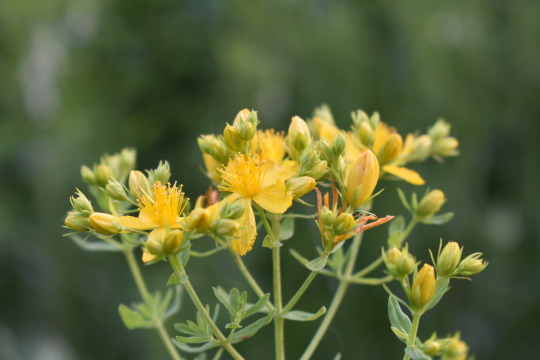
Common St. John's-Wort
Hypericum perforatum
Hypericaceae
Photograph taken on July 3, 2023, at Marmora and Lake, Ontario, Canada.
#wildflowers of southern ontario#yellow#Common St. John's-Wort#common st johns wort#st johns wort#St. John's Wort#Hypericum perforatum#Hypericum#Hypericaceae#wildflowers#wildflower#marmora#marmora and lake#ontario#canada
27 notes
·
View notes
Text

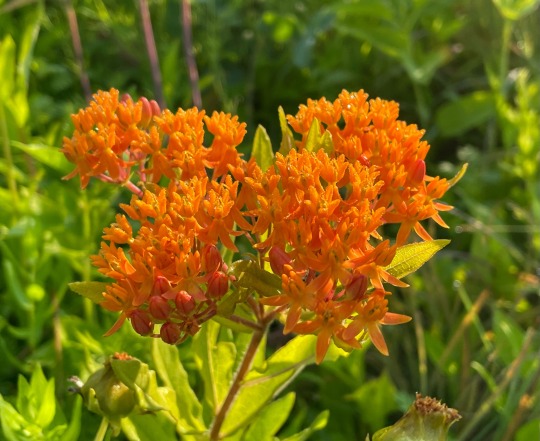

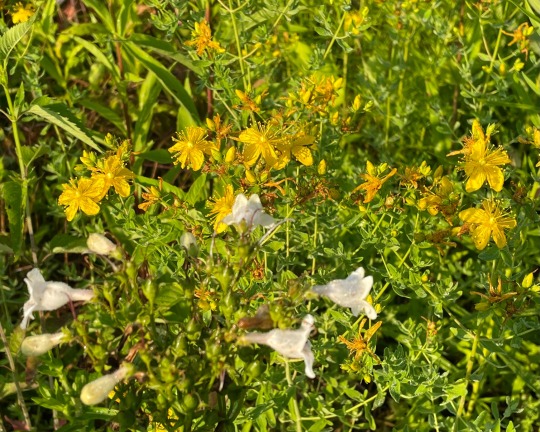

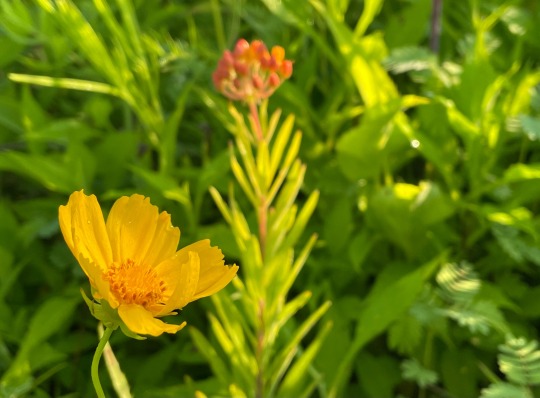

The flower fields at Eckville are nowhere near their peak yet but good things are happening.
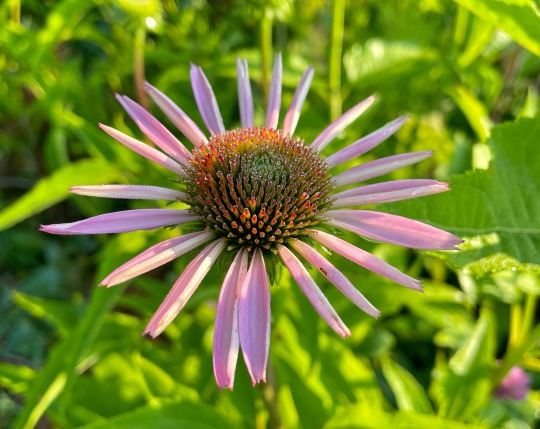
Forgot one.
#pennsylvania#landscape#wildflowers#flowers#coreopsis#st johns wort#butterfly weed#beardtongue#queen anne's lace#june#heliopsis#echinacea
450 notes
·
View notes
Text
29th August
The Feast of the Beheading of St John the Baptist

Salome Receives the Head of Saint John the Baptist by Michelangelo Merisi da Caravaggio. Source: Alamy Stock Photos
Today is the Feast of the Beheading of St John the Baptist. The original tale of the death of John the Baptist as told in the Synoptic Gospels was far removed from the gothic horror story it became once the ancient Jewish historian Josephus got his hands on it. The Gospels simply relate that John got the wrong side of Herod Antipas, Roman client king of Galilee, who criticised Herod for marrying his sister-in-law Herodias, which was considered incestuous under Jewish law. Herod imprisoned John and later had him executed as easily insulted absolute rulers are wont to do. Josephus added the vivid details of Herodias’ daughter, named Salome, performing the sensuous dance of the seven veils which so aroused Herod he promised his step daughter anything she desired. At her mother’s instigation, Salome demanded the head of the Baptist which an aghast Herod felt obliged to grant. John was duly decapitated and his head presented to Salome and the gory premise of a dozen ghoulish Renaissance paintings was set.
According to tradition, the normally yellow flowers of St John’s Wort speckle in red today in commemoration of John’s violent death, even though by this late stage in the summer the plant’s blooms have usually converted into berries. St John’s Wort’s magical powers to ward off evil are said to be particularly enhanced today. It is suggested that the reason for St John’s high status among saints’ feast days may have as much to do with Christian missionaries adapting the Celtic and Germanic head cults of the pagans that they wished to convert, as it did with recognition of John as Christ’s forerunner.
0 notes
Text
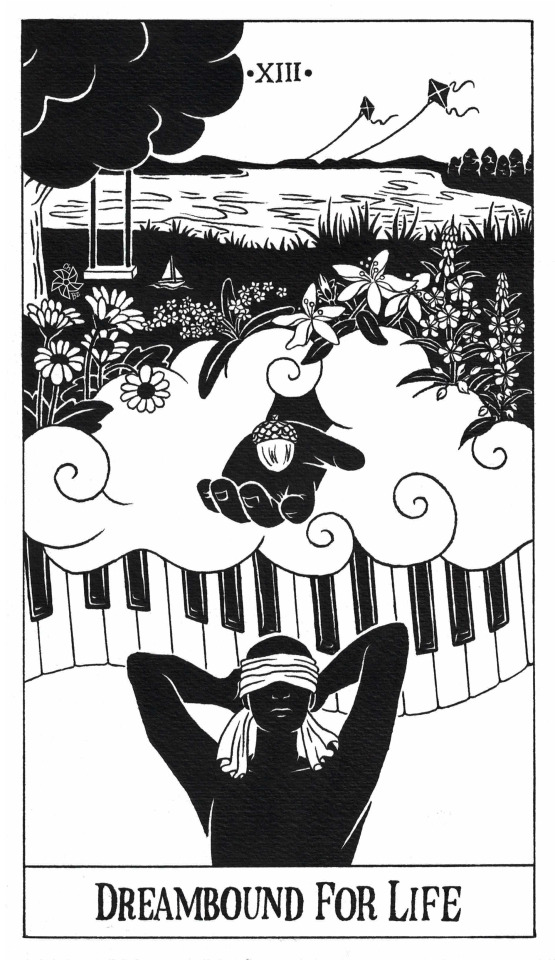
A five-year-old winterheart
In a place called home
Sailing the waves of past
Partially referenced from a Simona Rossi & Eon illustration.
#more coming soon!#Dreamer's Hideaway#nightwish#dark passion play#meadows of heaven#nightwish fan art#symphonic metal#from left to right:#daisies#forget me not#st. john's wort#fireweed#plus the acorn from an oak of course :^)#india ink#nightwish fanart#oracle deck#tarot art
10 notes
·
View notes
Text
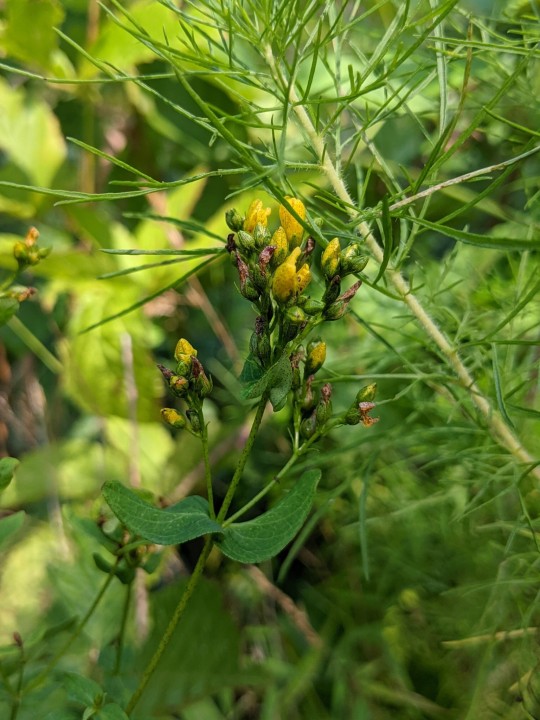
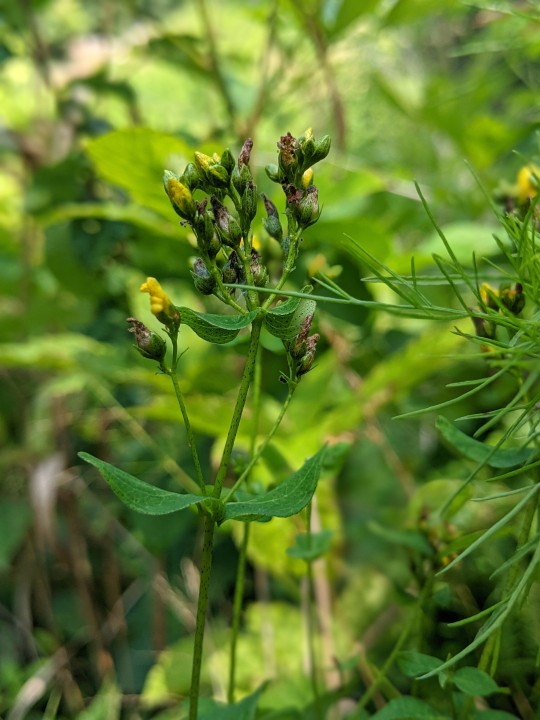
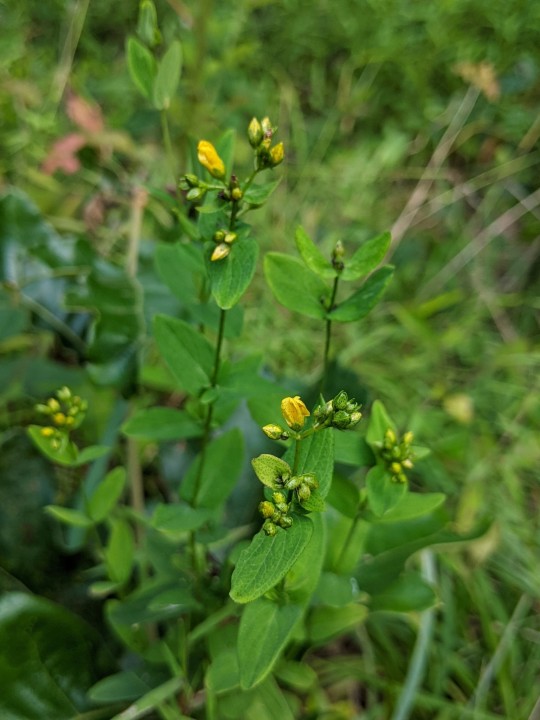

Spotted St. John's Wort - Hypericum punctatum
#plant id#wildflowers#native plants#medicinal plants#hypericum#hypericum punctatum#st john's wort#spotted st john's wort#saint john's wort
30 notes
·
View notes
Text
1+1=1
[or Before / After - After - After]
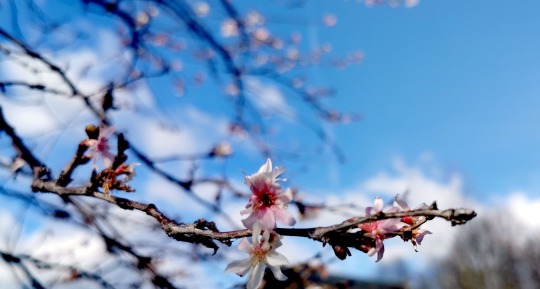
I never celebrate Ostara (it's Ostara?), not my cup of tea, after the Solstice, I impatiently wait for the Equinox, and especially for it to lead to Walpurgis. BUT hello, COUCOU to 'my' mutuals, may the winds be favorable to you all 💚 . Here, we experience a lovely month of May. (oh wait,)

I have classes on public property at the largest Psychiatric Hospital in my town. I don't know if there's a connection, but this last month has left me technically knocked out.
Plus, Lent is coming. 😱

I started preparing these two mother tinctures around the winter Solstice. Mother tinctures because I let the plant infuse in pure ethanol for a lunation and a half. First time trying this method. Before I always cut with water, about 2 to 1.
I believe an 'even more' mother tincture is with the root of the fresh plant. But I have not yet had permission to uproot a St. John's Wort plant. (Unlike Datura, but this time I decided to try a tincture only with seeds from my oldest plant.)
Tadaaaa.

The Datura is not ready yet so I won't say anything about it. But given the state in which I am psychically (therefore mentally and physically), very 'parasitized', both by the living idiots, the dead idiots, by the living twisted people, the dead twisted people, the twisted ones from the other beyond, those of the lower astral, etc., St. John's wort became vital.
It is the blood that my liver no longer has, triple-purple blood. LIFE.

I'm taking advantage of this beginning of the month to start a cure. And as Lent arrives, and I am in panic about what I have decided to give this year (meat, among other things..-> while we found a wonderful mountain farmer some time ago who makes delicious meat 😢), I pick up Celandine (in great shape at the moment in my region), a little, I must say very veeeery little Absinthe (that's managed by the Good Neighbors from here), AND Nettle. It's going to be disgusting and the more disgusting it is, the more space it makes.

Also, to take back space and let's say it, to take back my territory, I don't like complicated things, so I worked on a very simple rite of purification, of oneself and of space, which only requires a wooden spoon as a tool, and nothing but salt and water as ingredients. I think aficionados here will have understood what it is about. I practiced this purification after meditating on drums, and the result is always very effective on me. What a surprise, I had a lot of pain in my lower back after purifying myself! Afterwards I made a few other small adjustments.

I am now ready to start stressing about Lent again. 😱
11 notes
·
View notes
Text




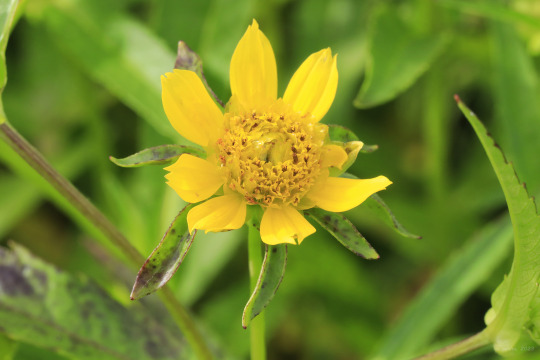

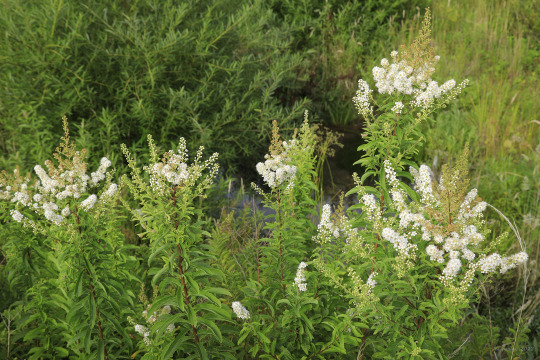




Late afternoon at the balsam fir swamp in Canaan Valley National Wildlife Refuge.
From top: nodding bur-marigold (Bidens cernua), also sometimes referred to as nodding beggarticks, a clumping, wetlands-loving annual whose flowerheads nod as they mature and get heavier; bushy St. John's wort (Hypericum densiflorum), a gorgeous, densely-packed shrub with vibrant yellow flowers and copper-colored bark; white meadowsweet (Spiraea alba), a rapidly-colonizing shrub whose branching clusters of white flowers are one of summer's most generous gifts; narrow-leaved gentian (Gentiana linearis), a tall, elegant bottle gentian that can only be pollinated by bumblebees strong enough to pry open (or chew through) its closed petals; flat-topped white aster (Doellingeria umbellata), also known as parasol whitetop, a tall, attractive mountain aster with flat, branching clusters of white flowers; and the dainty white flowers of virgin's bower (Clematis virginiana), a vigorous, twining vine that forms beautiful, dense waves of foliage and flowers.
#appalachia#vandalia#west virginia#wildflowers#flora#summer#allegheny mountains#canaan valley#canaan valley national wildlife refuge#nodding bur marigold#nodding beggarticks#bushy st. john's wort#white meadowsweet#narrow-leaved gentian#narrowleaf gentian#flat-topped white aster#parasol whitetop#virgin's bower#balsam fir awamp#canaan fir
72 notes
·
View notes